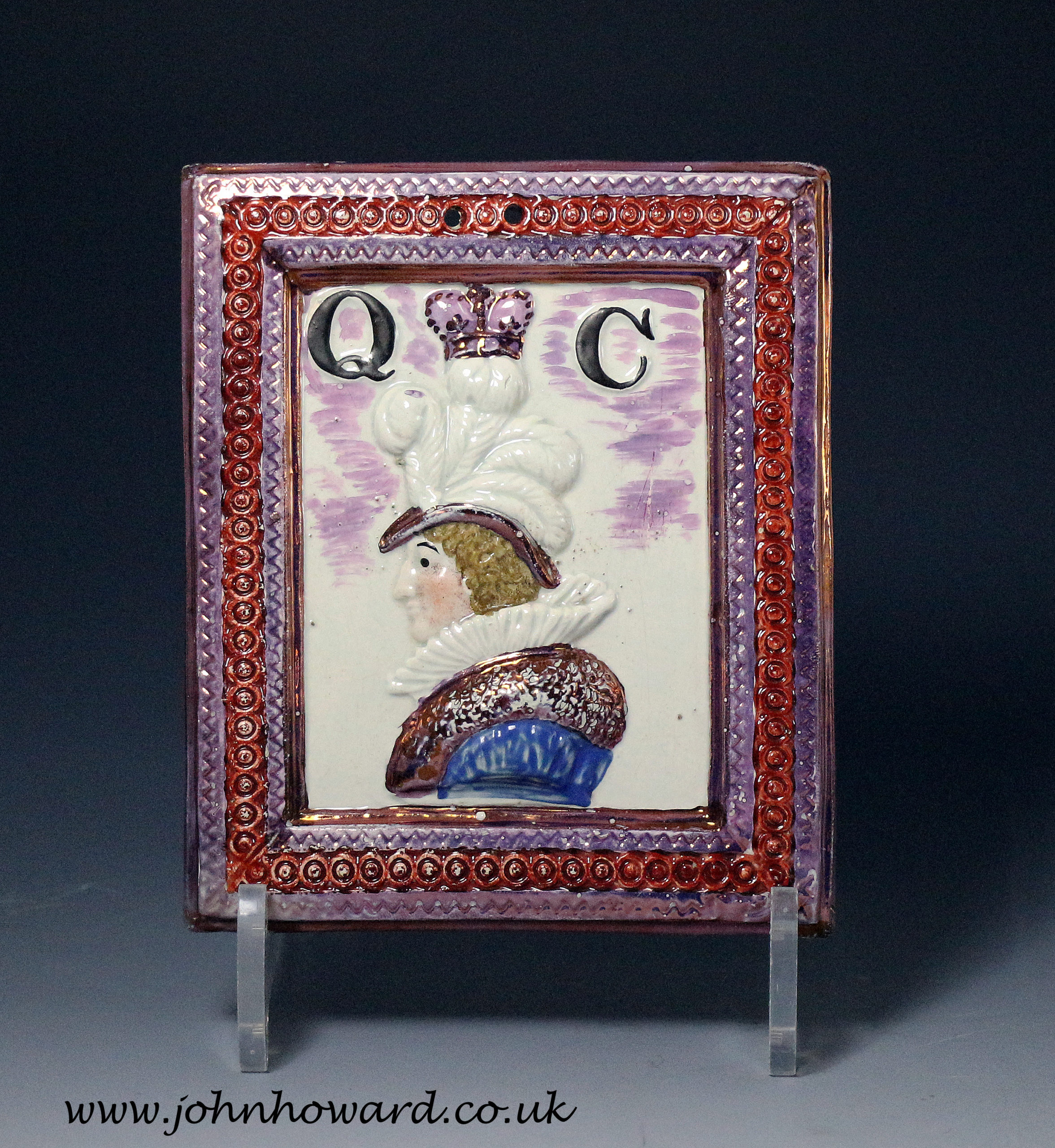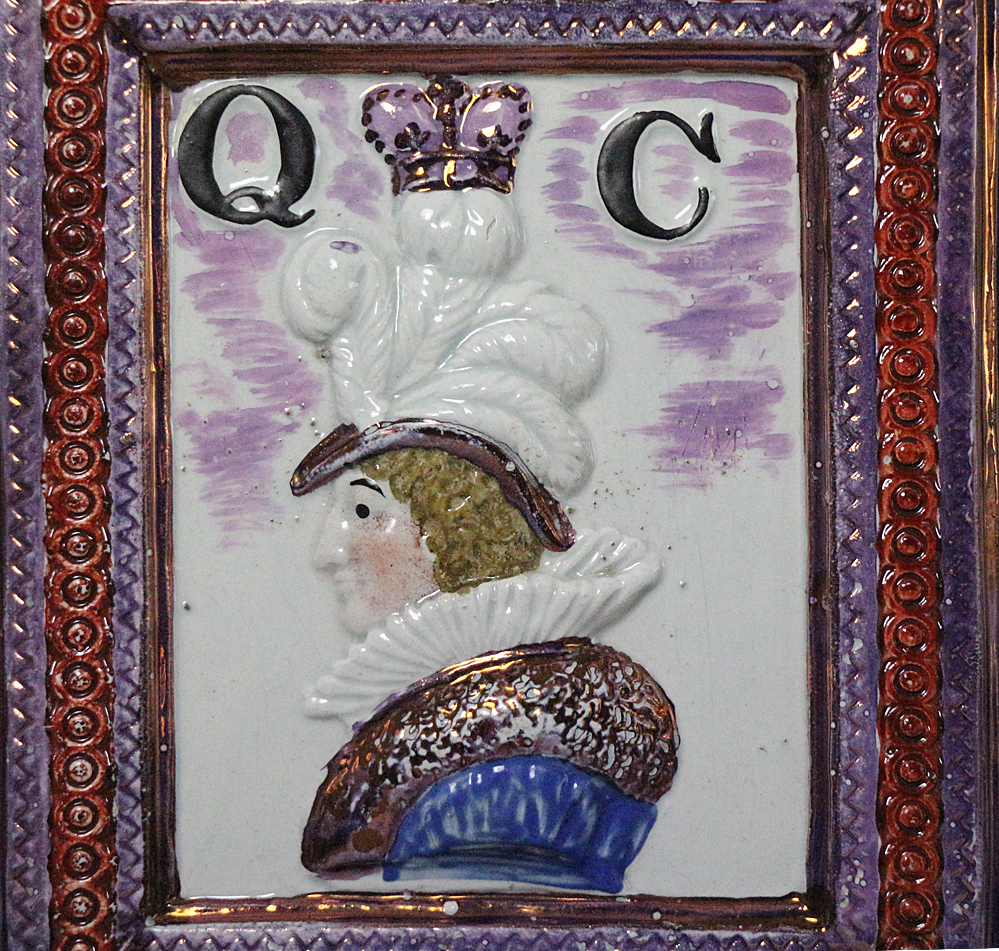Description
The pottery plaque is relief modeled with a portrait of Queen Caroline of Brunswick, she is wearing a hat with feather plumes, at the top of the picture are the initials Q C either side of a crown. The frame of the plaque is well detailed with high-quality pink luster decoration, which also is used applied around the Queen’s head. The piece is in excellent condition and one of the best examples produced.
NOTES
Wikipedia.
Caroline of Brunswick (Caroline Amelia Elizabeth; Caroline Amalie Elisabeth von Braunschweig-Wolfenbüttel; 17 May 1768 – 7 August 1821) was Queen Consort as the wife of King George 1V from 29 January 1820 until her death in 1821. She was the Princess of Wales from 1795 to 1820.
Caroline was engaged to her first cousin, George, in 1794, despite the two of them never having met. He was already illegally married to Maria Fitzherbert. George and Caroline married the following year but separated shortly after the birth of their only child, Princess Charlotte of Wales, in 1796. By 1806, rumors that Caroline had taken lovers and had an illegitimate child led to an investigation into her private life. The dignitaries who led the investigation concluded that there was “no foundation” to the rumors, but Caroline’s access to her daughter was nonetheless restricted. In 1814, Caroline moved to Italy, where she employed Bartolomeo Pergami as a servant who soon became Caroline’s closest companion,it was widely assumed that they were lovers. In 1817, Caroline was devastated when Charlotte died in childbirth. She heard the news from a passing courier as George had refused to write and tell her. He was determined to divorce Caroline and set up a second investigation to collect evidence of her adultery.
In 1820, George became King of the UK and Hanover. He hated his wife, vowed she would never be the queen, and insisted on a divorce, which she refused. A legal divorce was possible but difficult to obtain. Caroline returned to Britain to assert her position as queen. She was wildly popular with the British populace, who sympathized with her and despised the new king for his immoral behavior. On the basis of the loose evidence collected against her, George attempted to divorce her by introducing the Pains and Penalties Bill to Parliament, but he and the bill were so unpopular, and Caroline so popular with the masses, that it was withdrawn by the government. In July 1821, Caroline was barred from the coronation on the orders of her husband. She fell ill in London and died three weeks later. Her funeral procession passed through London on its way to her native Brunswick, where she was buried.



